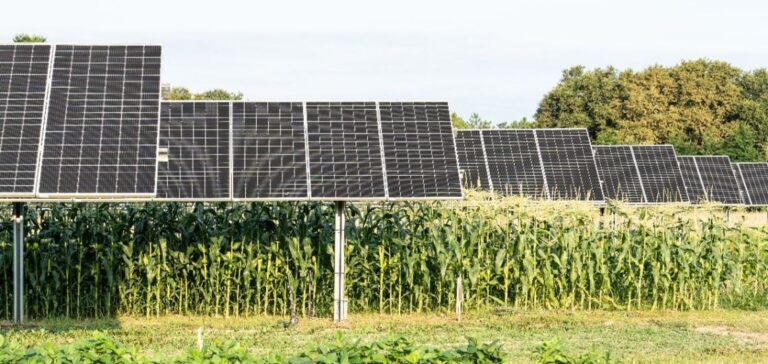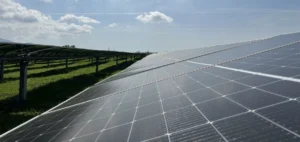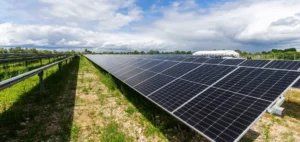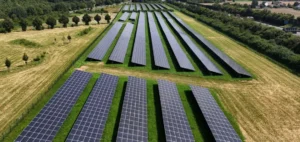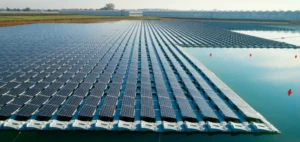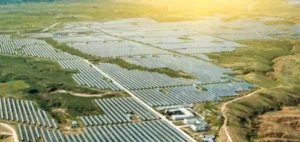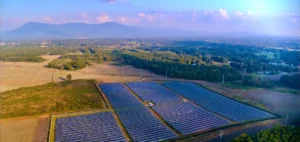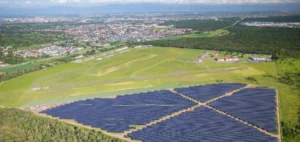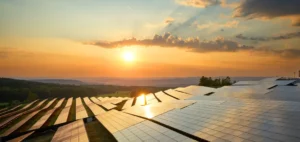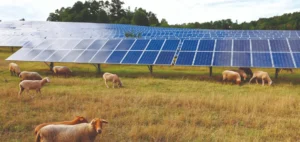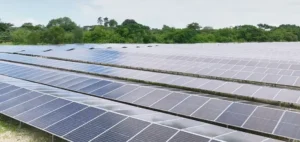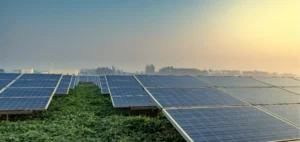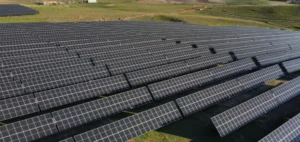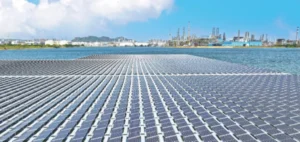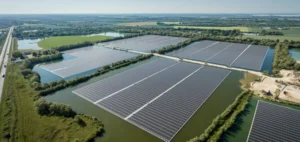Local authorities in the Landes region have authorized the Terr’arbouts project, one of the most ambitious agrivoltaic initiatives in France.
The project involves the installation of photovoltaic panels on 200 hectares of land within a 700-hectare agricultural perimeter, with a production capacity of 450 megawatts-peak.
The project is being carried out by a group of 35 farmers in partnership with GLHD, a company partly owned by EDF Renouvelables.
This installation could become one of the largest of its kind in the country, surpassing the performance of several existing solar power plants.
The 53 building permits issued for the project include strict conditions, particularly in terms of environmental protection and sustainable agriculture.
These regulatory constraints follow concerns raised during impact studies, notably about herbicide residues found in high quantities in the region’s drinking water.
The Landes prefecture specifies that farmers will have to comply with real environmental obligations and the status of tenant farming.
Operating conditions and environmental constraints
The Terr’arbouts project is part of a mixed production framework, combining agriculture and solar energy.
In exchange for the annual income generated by the operation of the solar panels, farmers commit over 40 years to managing their crops without pesticides, while testing varieties that require less water.
This initiative meets the sustainability requirements imposed by the local authorities and takes into account the region’s economic challenges.
This farming model, supported by the Chamber of Agriculture and some local authorities, aims to reconcile agricultural interests with energy ambitions.
However, this compromise is not without its critics.
The local branch of the Modef farmers’ union denounced a lack of transparency and impact studies deemed insufficient.
Last spring, the public inquiry commission had already expressed reservations, pointing to the lack of feedback on similar projects in the region.
Regulatory Issues and Controversies
The project comes at a time when the regulation of agrivoltaics in France remains unclear.
A decree published in April aims to provide a framework for these new forms of mixed farming, but many uncertainties remain, particularly regarding the link between agricultural production and energy.
The commission’s criticisms highlight the challenges of integrating photovoltaic panels on traditionally agricultural land, and underline the risks of imbalance for the ecosystem and the local agricultural economy.
For stakeholders, the success of Terr’arbouts will depend on the ability to meet farmers’ expectations while respecting the environmental constraints imposed.
Opponents of the project insist on the need to strengthen legislation to ensure harmonious cohabitation between different forms of land use.
They also call for greater transparency and rigorous monitoring of the impact of this type of development on local communities.
Sector outlook and adaptation
The authorization of Terr’arbouts is a strong signal for the agrivoltaic sector in France, but it also raises questions about the future of this booming industry.
Projects like this one are multiplying, and with them, discussions around their integration into agricultural and energy policies.
The sector will have to navigate between technological innovation and regulatory requirements to sustain its development.
As the legislative framework becomes more refined, agrivoltaic players will need to adapt their strategies to meet the economic, environmental and social challenges.
The success of initiatives like Terr’arbouts will depend on the ability to reconcile divergent interests, guarantee practices that respect farmland, and provide real economic benefits to farmers while supporting the transition to renewable energy sources.

